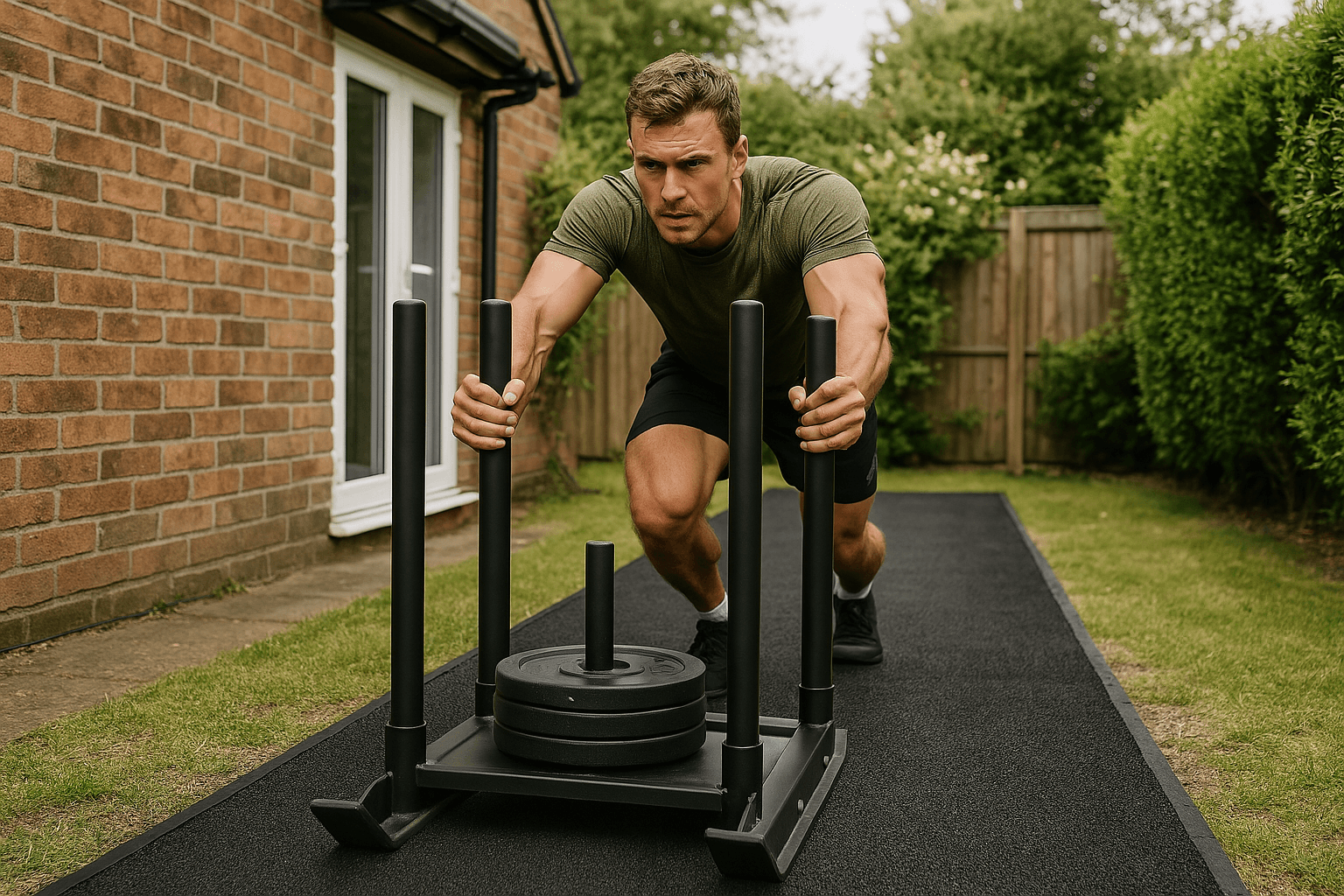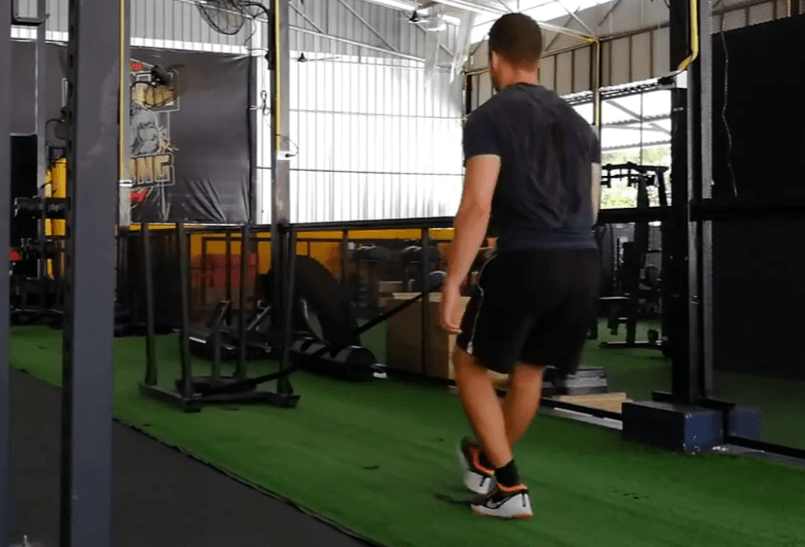
Push, Pull, Repeat: The Ultimate Sled Workout Plan
Share
Introduction: Where Tons of Force Meet Simple Steel
Table of Contents
- Introduction: Where Tons of Force Meet Simple Steel
- Why Sled Workouts Work
- Choosing the Right Weight Sled
- Master Loading in Three Steps
- Four-Week Push–Pull Cycle
- Detailed Sled Exercises & Workouts
- Warm-Up: Six Moves, Six Minutes
- Integrating the Sled With Barbells
- FAQ – Fast Answers for Sled Fans
- Closing Thoughts: Steel, Sweat, Repeat!
“Speed without strength is like a race car with no engine.” — Louie Simmons.
Elite sprinters hammer the ground with forces that exceed five times their body‑weight, yet they rehearse that violence with a plain metal weight sled. A sled workout packs that same punch—no eccentric soreness, no spinal compression, just sweat and steel!

Why Sled Workouts Work
Whole‑body firepower – quads, glutes, hamstrings, calves, hip flexors, shoulder blades, chest, and triceps all work together.
Concentric bias – you push, you pull, you recover fast; DOMS stays low even after brutal sled drag sessions.
Scalable load – add weight or go minimal weight; spike training intensity without fancy machines.
Standing position matters. Keep a neutral spine, upper arms tight, and core engaged. That’s correct form, every rep.
Choosing the Right Weight Sled
|
Model |
Best Use |
Typical Surface |
|---|---|---|
|
Drag Sled |
Forward drags, pull the sled backward walks, lateral pulls |
Turf / grass |
|
Push Sled (Prowler) |
Low or low sled push for acceleration, high‑grip sled push for power |
Turf / rubber |
|
Wheeled Sled |
Indoor sprint training, adjustable sled weight via brake |
Turf |
A lighter sled teaches speed; a heavier one teaches force. Know your training goals—then load the sled accordingly.

Master Loading in Three Steps
- Test heavy – one hard 15 m drag gives you a baseline.
- Derive zones
- Speed: 20–30 % of baseline (think sprint performance).
- Power: 70–80 % baseline.
- Conditioning / GPP: empty or very light.
3. Retest every 6 weeks – when the same load feels like a walk forward, it’s time to add weight.
Four‑Week Push–Pull Cycle
|
Week |
Focus |
Main Driver |
Load Guide |
|---|---|---|---|
|
1 |
Hypertrophy |
Volume supersets |
50–60 % baseline |
|
2 |
Max Strength |
Low‑rep sled chest press, harness drags |
90–110 % |
|
3 |
Speed & Power |
30 s sled forward sprints |
20–40 % |
|
4 |
Active Recovery |
Light zombie walks, sled face pulls |
Empty–15 % |
Repeat the cycle three times, nudging volume or load each pass.
Detailed Sled Exercises & Workouts
Week 1 – Hypertrophy Inferno
- Backward drag × 15 m – keep hips forward, foot flat.
- Arms‑extended sled push × 15 m – drive, stand tall at finish.
- Hand‑over‑hand row × 10 – squeeze shoulder blades.
- Chest press × 12 – elbows in, explosive.
- Hammer curl → triceps kickback × 12 each – arms straight, then bent.
Three rounds, 90 s rest after each circuit.

Week 2 – Max‑Strength Triple
- Hinge‑and‑row 3 × 5 – lift then pull.
- Low‑grip push press 3 × 5 – violent knee drive, opposite arm locked on each reset.
- Harness drag 3 × 25 m – grind!
Week 3 – Sprint‑Interval Conditioning
Six 30‑second high‑grip pushes at 25 % baseline. Jump forward into the start, rest 2 min, add an interval each week until you hit ten.
Week 4 – Active Recovery Flow
- Zombie walk × 200 steps – arms locked, lighter sled.
- Lateral crossover walk × 100 steps/side – feet stay flat.
- Face pull → pec flye → reverse flye 3 × 15 – polish posture.
Warm‑Up: Six Moves, Six Minutes
Supported deep squat with rotation, deficit push‑ups, band three‑way rows, dynamic calf stretch, pogo jumps, broad jumps. Start facing the sled, finish standing tall—ready for action.
Integrating the Sled With Barbells
A sled workout can replace accessory lifts, finish a leg workout, or stand alone as a full body workout. Keep at least one squat and one hinge pattern each week; sleds amplify, not replace, joint‑angle strength.
FAQ – Fast Answers for Sled Fans
How often? Two focused sessions weekly. Speed micro‑sessions can slot in more often.
Hill sprints vs. sled push? Different drag vectors. Use both.
Surfaces? Concrete offers max resistance; turf protects joints.
Knees sore? Start backward drags with light weight, consult a physical therapist if pain persists.
Best load for sprint training? 20–30 % body‑weight over 10–20 m improves acceleration fast.
Closing Thoughts: Steel, Sweat, Repeat!
Strip training to essentials: a chunk of metal, a patch of ground, relentless intent. Push, pull, repeat. The next layer of athleticism is waiting—grab that weighted sled, lock your shoulder blades, drive, and own it!
